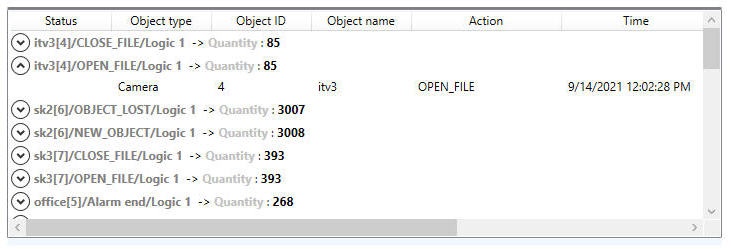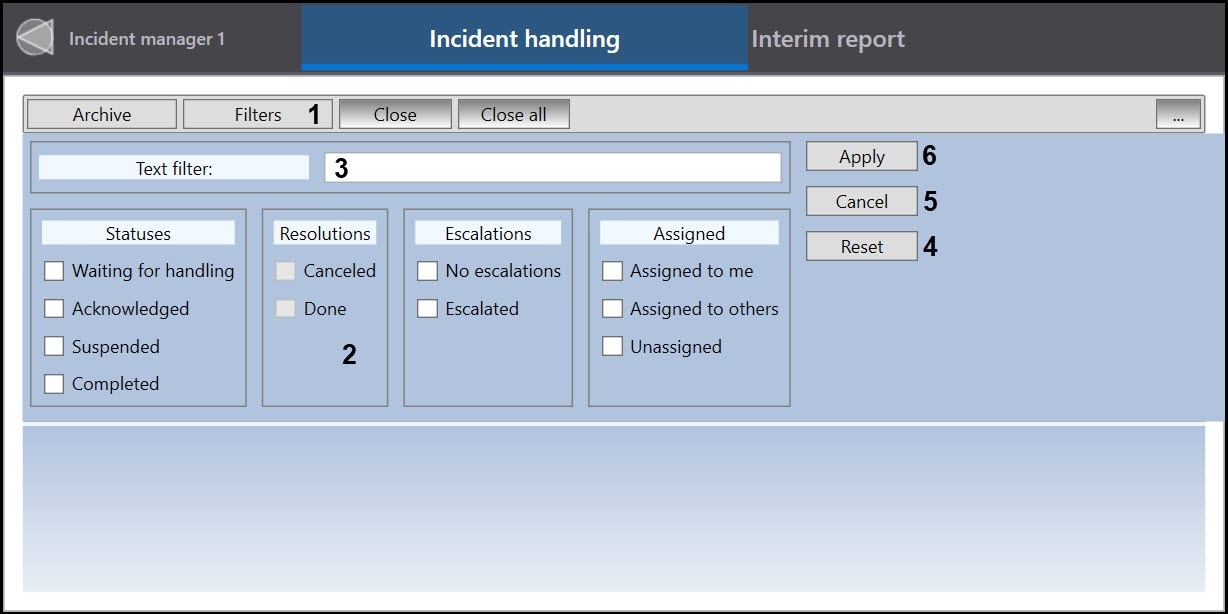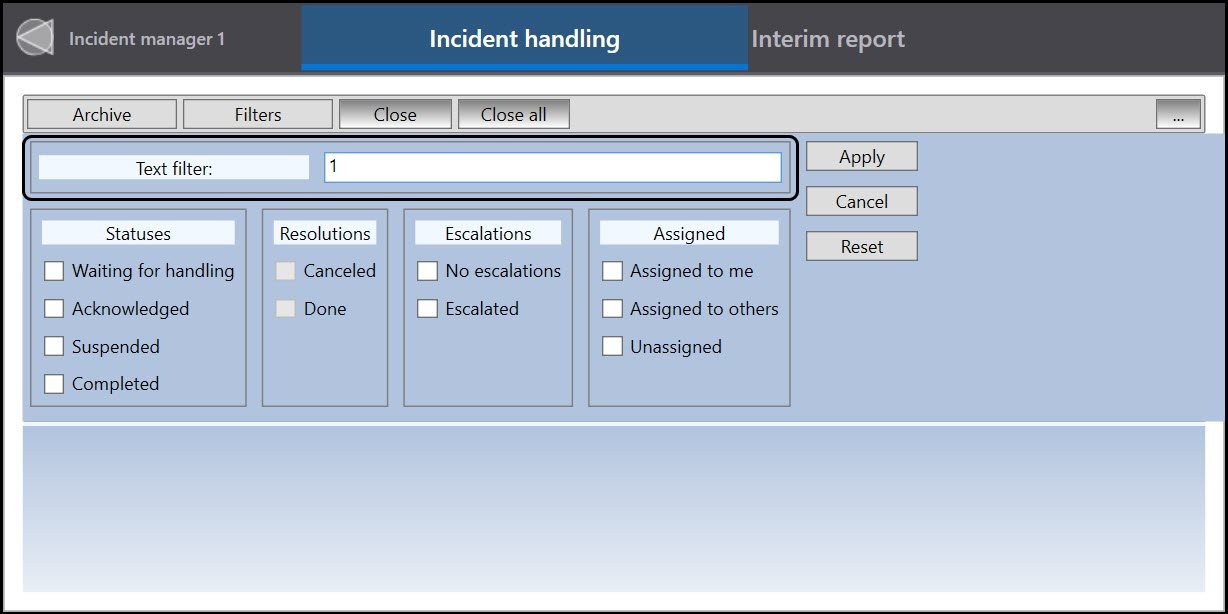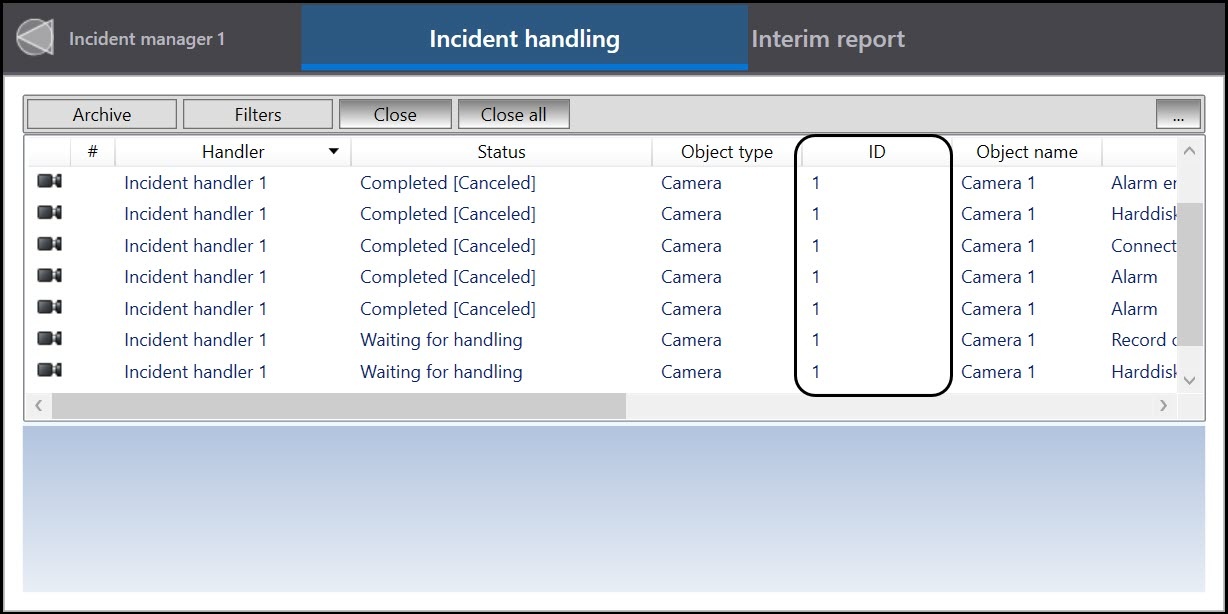
Go to documentation repository
Viewing events
The following information is displayed for each event by default:
- Indicator of the presence of the camera associated with the event .
- Incident handler — the name of the Incident handler that will process the event.
- Event status.
- Object type.
- Object ID.
- Object name.
- Action — description of the event.
- Time the event occurred.
- Priority.
- Computer — the name of the computer from which the event was received.
- Time (sec) — the number of seconds since the event occurred.
- Last comment — only the last comment entered while processing the event.
- All comments — all comments entered while processing the event.
To change the displayed information columns, do the following:
- Click the button (1).
- Set the checkboxes next to the columns you want to display (2). To set checkboxes for all columns at once, click the Select all button (3), to clear the checkboxes, click the Deselect all button (4).
- Click the Apply button (5). To cancel the changes, click the Cancel button (6).
Event statuses
By default, an event has an empty status in the Incident manager. Eventually, an event may receive the following statuses:
- Acknowledged. This status is displayed if an event is taken into processing and is currently being processed.
- Suspended. This status is displayed if event processing was started and not completed but suspended.
- Taken by others/<Last name of the operator who took the event into processing>. This status is displayed if the event is being processed by another operator.
- Suspended by others. This status is displayed if event processing was started and not completed but suspended by another operator.
- Escalated. This status is displayed if the event was escalated to another operator. The following options are available:
- Escalated/Suspended by others — status immediately after escalation.
Escalated/Taken by others — the escalated event was taken into processing by another operator.
Note
Depending on the Incident manager settings, when an event is escalated, it may not change its status, but disappear from the list for the person who escalated the event.
- Escalated/<Last name of the operator who escalated the event>. This status is displayed to the operator to whom the event was escalated.
- Escalated/Acknowledged. This status is displayed to the operator to whom the event was escalated when he took it into processing.
Grouping events in the list
If event grouping in the list is enabled in the settings (see Configuring the events grouping in Incident manager), then the events in the list will be grouped by object type / object ID / event type / logic ID.
To view the events within the group, click the button.
Depending on the settings, when you expand a group, either the first event or all events in the group will be displayed.
Sorting events
To sort events alphabetically, click on the name of the required column.
Filtering events
To filter out and display specific events, do the following:
- Click the Filters button (1).
- Apply the filter in one of the following ways:
Set the checkboxes next to the column values by which you want to filter out the events (2). To clear all selected checkboxes, click the Reset button (4).
Note
In order to display the events assigned to the current Operator or other Operators, it is necessary to set the checkbox next to the Assigned to me or Assigned to others value in the Assigned column, respectively. In order to display the events assigned to both the current Operator and other Operators, set the checkboxes next to both the Assigned to me and Assigned to others values.
- In the Text filter field, enter the object name, object ID, or the action of the event (for example, Activated), by which you want to filter out the events (3). It is not necessary to enter full object name, object ID, or action. The filter will display all found matches based on the value entered in the Text filter field. To delete the entered value, click the Cancel button (5).
- Apply the filter using both the checkboxes and text at the same time. To do this, enter the object name, object ID, or the action of the event (3) in the Text filter field. Then set the checkboxes next to the column values by which you want to filter out the events (2). To clear all selected checkboxes and delete the entered value in the field, click the Cancel button (5).
- Click the Apply button (6).
As a result, only those objects that match all the filter criteria at the same time will be displayed.
Example of applying the event filter by object ID:





